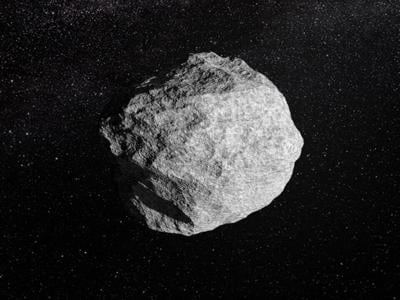An asteroid about the size of a 15-storey building that earlier this year threatened to collide with Earth may now be headed for another target: the moon.
NASA has in 2032 to 4.3 per cent, an unlikely collision that, if it happens, may be visible from Earth and would leave the moon with a crater up to a kilometre in diameter.
There’s no risk to humans, astronomers say, and the moon’s orbit won’t be impacted.
ŌĆ£Craters of that size are only produced on the moon every few thousand to 10,000 years, so itŌĆÖs actually pretty unusual,ŌĆØ said Peter Brown, a professor at Western University and the Canada research chair in planetary small bodies. ŌĆ£It’s unlikely anybody in recorded history has seen an impact anywhere near this size on the moon, so it would certainly be quite spectacular.ŌĆØ
One of the highest-risk asteroids in the last 25 years
When astronomers first discovered 2024 YR4 late last year, the asteroid had a roughly three per cent chance of hitting Earth, making it one of the highest-risk asteroids identified in the last 25 years. With further observation, scientists ruled out a collision.
ItŌĆÖs still possible that 2024 YR4 will hit the moon when it swings by Earth in seven years.
Last week, an observation of the asteroid by the James Webb Space Telescope allowed NASAŌĆÖs Centre for Near-Earth Object Studies to improve its prediction of where 2024 YR4 will be on Dec. 22, 2032 by nearly 20 per cent. As a result, the likelihood of it smacking into the moon increased from 3.8 per cent to 4.3 per cent.
The odds are still low ŌĆö about a one-in-23 chance ŌĆö and further measurements when the asteroid sweeps by Earth again in 2028 will refine its orbit. The most likely scenario is that those readings will rule out the possibility of a collision with the moon, Brown said.
What a collision would do
The asteroid would hit the moon at 13 kilometres per second, release about six megatons of energy and kick up about 100 million tons of material from the moonŌĆÖs surface, according to Brown. More than 99 per cent of the rock will fall back to the moonŌĆÖs surface.
Some of the material may be blown into space, though, and could come towards Earth, according to Martin Connors, an astronomy professor who studies asteroids at Athabasca University in Alberta. ThereŌĆÖs no danger to people on the ground, because any debris will burn up in the atmosphere, but smaller chunks may damage satellites.
ItŌĆÖs still ŌĆ£probably nothing you want to lose sleep over,ŌĆØ Connors said.
What we can learn from it
A collision would be a rare opportunity to learn more about the moon and its history, said Heidi White, an outreach officer with the Universit├® de Montr├®alŌĆÖs Trottier Institute for Research on Exoplanets. It would blast away the regolith, a layer of rock and dust on the moonŌĆÖs surface, revealing exposed bedrock that could then be studied by lunar orbiters.
The size of the potential crater would also be significant. Astronomers already have a sense of how often asteroids of this size collide with the moon and planets, but they only have estimates of how big the resulting crater would be. By getting real-world data, they can count the craters of that size and estimate how old the surface is.
ŌĆ£This would be an invaluable data point that essentially would be unattainable any other way,ŌĆØ Brown said.
And if things break the right way ŌĆö if the asteroid hits on the near, dark side of the moon ŌĆö it might even be visible on Earth.
“I have no doubt that you’d see quite a nice show with your naked eye,” Connors said. “If it hits the night side, it would be spectacular.”
































